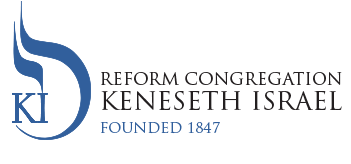The National Association for the Advancement of Colored People (NAACP) and American Jews have a long-shared history. Last week’s viciously anti-Semitic posting by Minister Rodney Muhammad, head of the Philadelphia Chapter of the NAACP, has thrown relations between Americans Jews, African Americans, and the NAACP into disarray. First and unequivocally, Minister Muhammad needs to resign. His invoking of an anti-Semitic, Nazi meme was inexcusable and betrays the mission and goals of the NAACP. In my opinion, the NAACP at the national level needs to secure this resignation to remove any doubt as to their organization’s philosophy moving forward. Second, the NAACP needs to affirm its historic mandate of fighting all forms of bigotry and discrimination. The mission of the NAACP (in their own words) “is to secure the political, educational, social, economic equality of rights in order to eliminate race-based discrimination and ensure the health and well being of all persons.” Third, American Jewish-NAACP cooperation must continue and maintain its extraordinary legacy of dialogue. Fourth, the Philadelphia Jewish community needs to recognize the size, strength and continuing growth of our local African American Muslim community, the largest in the United States, and work to build bridges between us, them and others.
I think it is important to keep the current controversy in historical perspective, as there are forces in both communities which want to break down the historic ties between American Jews and African Americans and empower anti-integrationist and anti-acculturationist ideologies on both sides of the debate. That would be a mistake. That would be a tragedy that for American Blacks, American Jews, and America itself. At the same time, we need to appreciate there are differences and tensions between Jews and Blacks and the United States and at the same time, we can and must work together for the benefit of our country.
The NAACP was founded in 1909 in reaction to a terrible race riot the year before in Springfield, Illinois. Among the original founders of the NAACP were Henry, Moskowitz, and a Rumanian Jew, who worked as the Executive Director of the Broadway League in New York. Moskowitz was joined in his support of the NAACP by Rabbi Emil Hirsch (son of KI’s Rabbi, the late Samuel Hirsch), Julius Rosenwald (father of KI’s Lessing Rosenwald), Jacob Schiff who was the leading Jewish philanthropist of the Progressive Era and the well-respected Spingarn family. To this day, the Spingarn Medal is one of the highest awards given by the NAACP to those who best exemplify its goals and values. The young Rabbi Stephen Wise, a leading voice of American Zionism prior to World War II supported the NAACP and via W.E.B. Du Bois’ Niagara Movement, Lillian Wald of Settlement House fame also supported the newly founded NAACP.
But perhaps the most fruitful collaboration between the American Jewish community and, in particular, the Reform movement in Judaism, and the NAACP took place in the early 1960s. In 1962, the Union for American Hebrew Congregations (UAHC, now the Union for Reform Judaism, URJ) purchased the old Ecuadorian Embassy at 2027 Massachusetts Ave in Washington, DC NW and launched its Religious Action Center (RAC) there. In 1964, with Reform, NAACP leaders and others huddled around the table, the historic Civil Rights Act was written. The following year, the same coalition produced the Voting Act Rights of 1965 (gutted by the Supreme Court in 2013). In other words, the most progressive social and civil legislation in American history was born of NAACP-American Jewish cooperation.
It is important to note that the seed money for the RAC was given by a Reform Jew, Kivie Kaplan (1904-1975) in 1959. Kaplan, a Bostonian, joined the NAACP in 1932 (at age of 28), was elected to its national board in 1954 and from 1965 to 1985, served as President of the NAACP. He marched and was jailed with Dr. Martin Luther King, Jr on many occasions including the Edmund Pettus Bridge crossing in Selma, Alabama. Curiously, on the back of his business card, Kaplan always had the words “Keep Smiling” printed.
There is a saying to the effect that things were never as good between Blacks and Jews as Jewish liberals would have it, nor were or are they as bad as Black Nationalists allege. Tensions between American Jews and American Blacks are nothing new. As a child, I heard endless coded comments about Blacks and was very aware that Jews were paradoxically part of the white flight movement just as they were largely pro-Civil Rights. Later, I learned that Dr. King, Representative John Lewis and other African American leaders were hard pressed by Black Nationalists for their integrationist views. But these tensions are secondary to the need for cooperation in pursuit of civil equality in the United States. Hopefully, at these difficult times, American Jews and leaders of the NAACP will remember our joint heritage, our larger common purpose and together with Kivie Kaplan and others will find a way back to marching and smiling together.
Shabbat Shalom,
Rabbi Lance J. Sussman, Ph.D.
